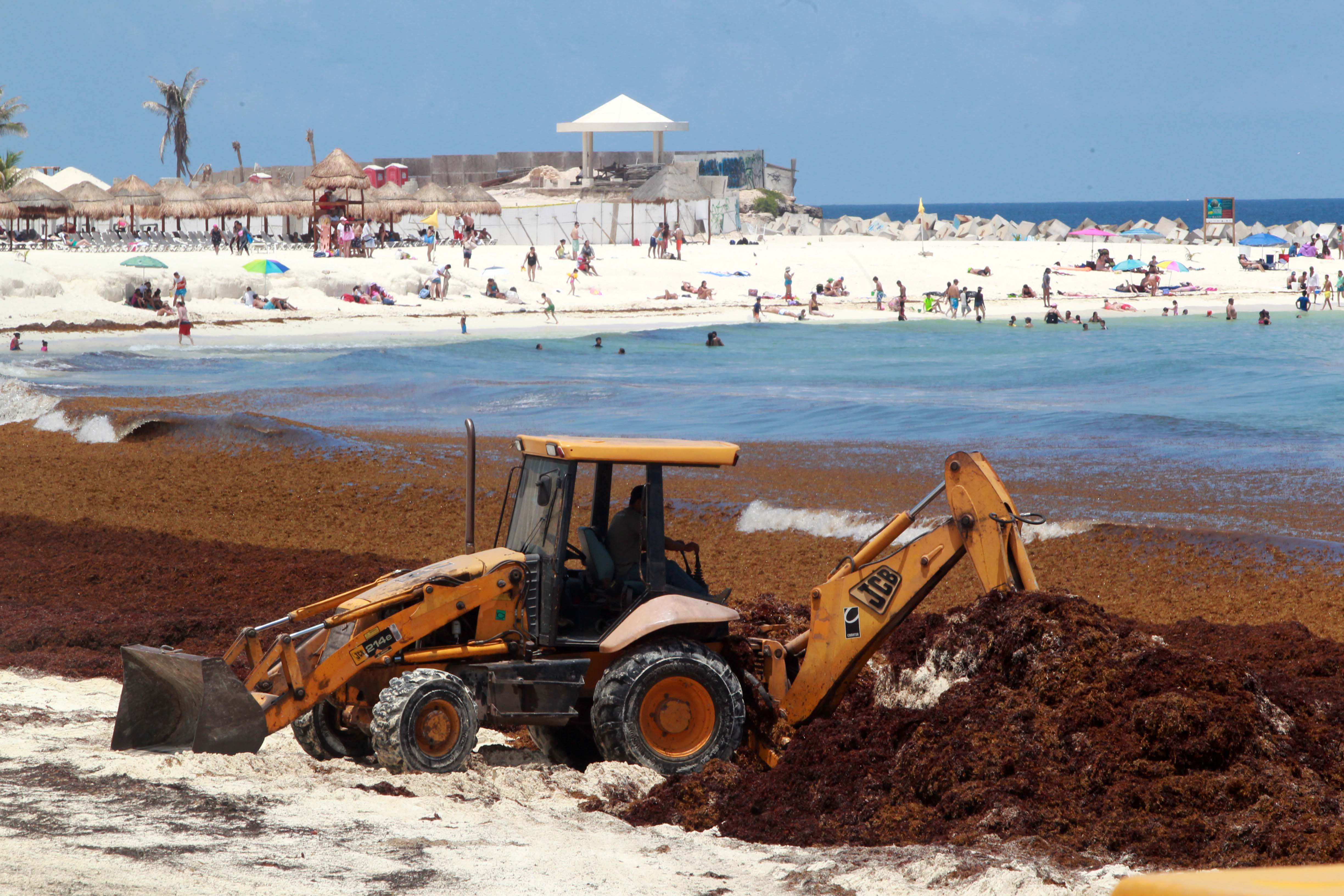
Mexico fears seaweed invasion will deter tourists
"The appeal of this (region) is its turquoise sea and white sand... If tourists see beaches with tons of rotting organic matter and foul smells, they won't…
Large amounts of sargassum seaweed have washed up on the shores of the tropical resort city of Cancun and almost all of Mexico's Riviera Maya over the past few weeks.
The waves of sargassum have forced visitors to consider traveling to other tourist destinations instead.
"The appeal of this (region) is its turquoise sea and white sand," Brigitta Ine van Tussenbroek, a researcher at the National Autonomous University of Mexico (UNAM) Marine Sciences Institute, pointed out.
But "if tourists see beaches with tons of rotting organic matter and foul smells, they won't come back," she said.
The tourism department of the southeastern state of Quintana Roo, which is home to the Riviera Maya, indicated that the region welcomed some 16.9 million tourists in 2017, which translates to an increase of 5.3 percent compared to 2016.
And those visitors generated $8.81 billion for the state's economy.
Tourism officials said that, despite the sargassum infestation, hotel occupancy in Quintana Roo is currently running at around 90 percent, compared with 82.77 percent in the summer of 2017.
RELATED CONTENT
Mexico's environment secretary, Rafael Pacchiano, recalled last week that in 2015 an "atypical" amount of seaweed washed up on Mexican beaches and that the situation is recurring now.
According to Pacchiano, a brown patch of seaweed is forming at sea that is larger than the one observed in 2015.
"This is a situation that not only affects Mexico. Practically the whole Caribbean has been affected," he said.
"We intend on carrying out a pilot study to see if the sargassum can be diverted at sea so that it is picked up by other currents," he told a press conference in Mexico City.
Hotels in Quintana Roo are currently spending an estimated 1 million pesos ($52,870) a month to remove the sargassum from the region's beaches.
Sargassum makes its way to the Mexican Caribbean from two main sources: the Sargasso Sea, near Bermuda, and an area north of Ecuador off the coast of Brazil.










LEAVE A COMMENT: